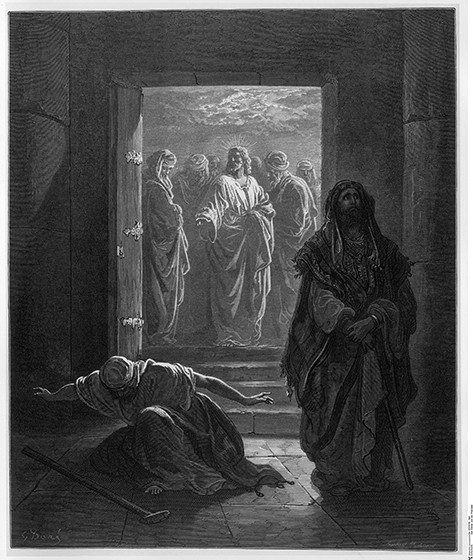The Tax Collector and the Pharisee, by Raymond Quinsac Monvoisin

Raymond Quinsac Monvoisin’s 1865 wood engraving of the parable of the tax collector and the Pharisee (after a sketch by Gustave Doré) arranges the composition as if the viewer is on the altar looking toward the two men. The viewer is in a position of judgment. We see Jesus and his disciples watching the event from just outside the door. The Pharisee stands erect with his hands clasped in front of him. The tax collector bows down and kneels on his mat with arms wide, offering himself to God. His body language reflects his abject humility before God. Of course, it would be inappropriate to generalize from the parable that all Pharisees in Jesus’ day displayed such self-righteous piety. While some of those in Jesus’ audience who looked with contempt on others were most likely Pharisees (18:9; cf. 15:2), surely not all of them were. Luke knew also of genuinely pious religious authorities (cf. Luke 23:50–51; Acts 5:34). Nor did all tax collectors share this one’s sense of remorse (cf. Luke 5:30). Jesus’ final message summarizes the parable: “Everyone who exalts himself will be humbled, but he who humbles himself will be exalted.”


